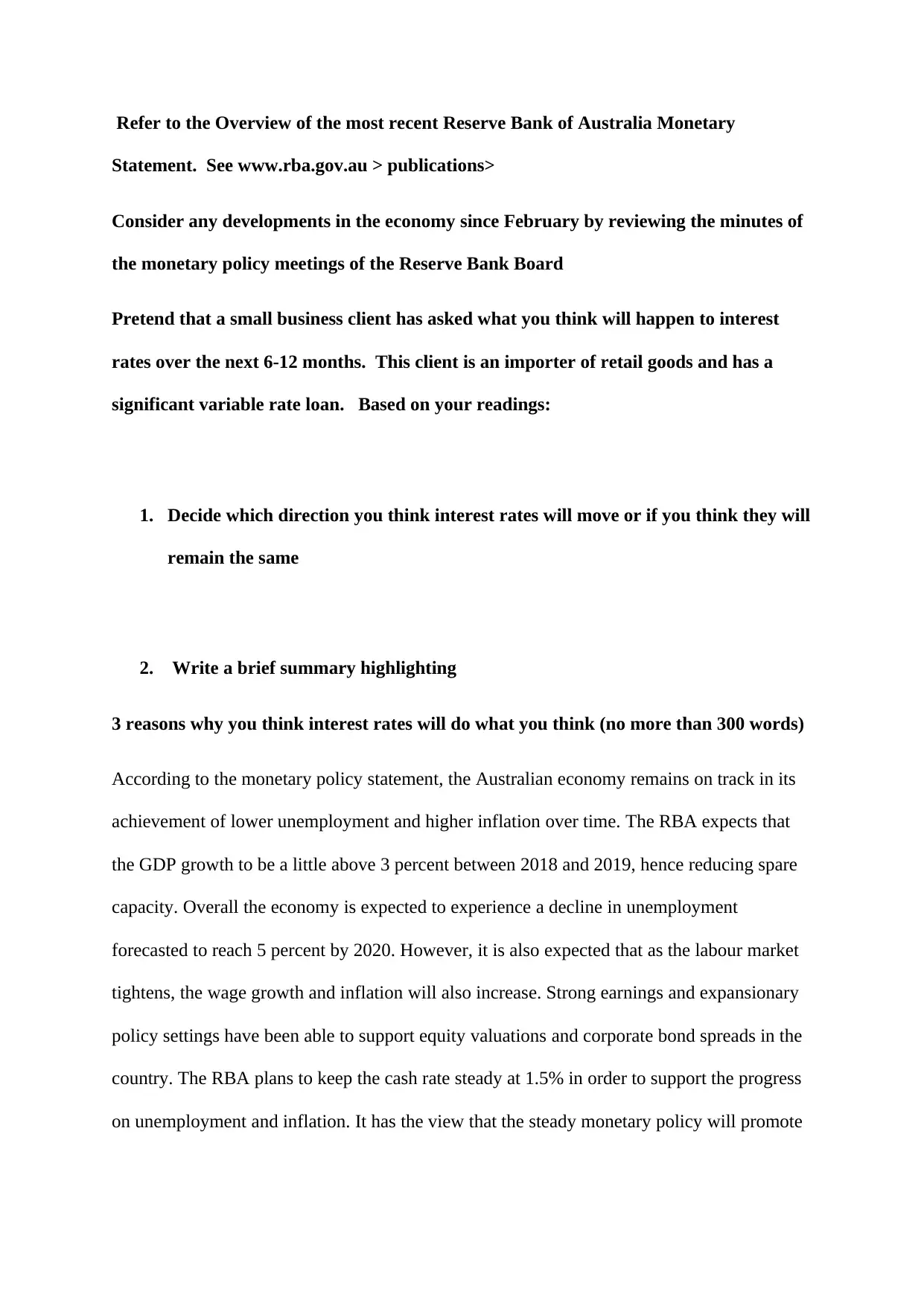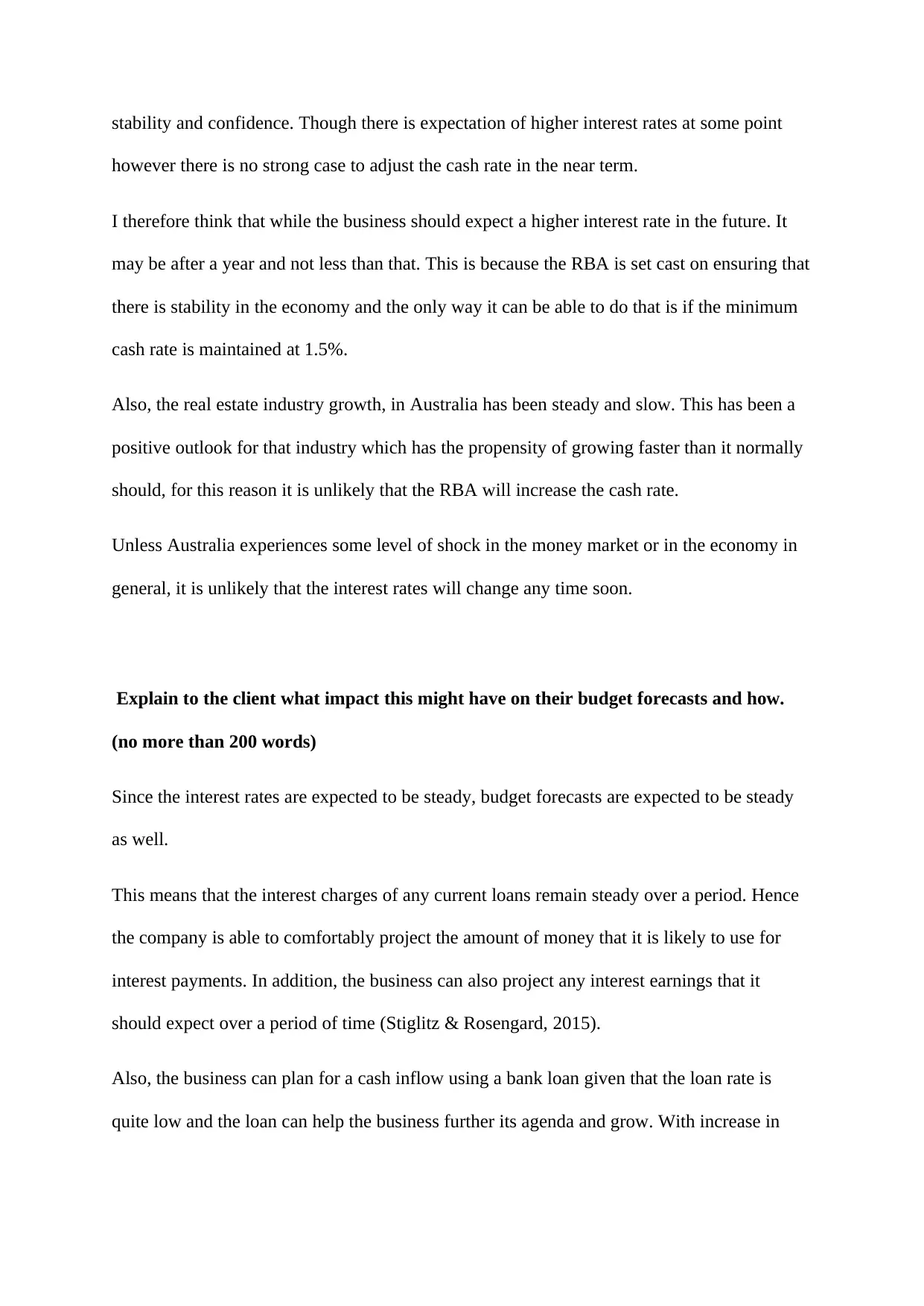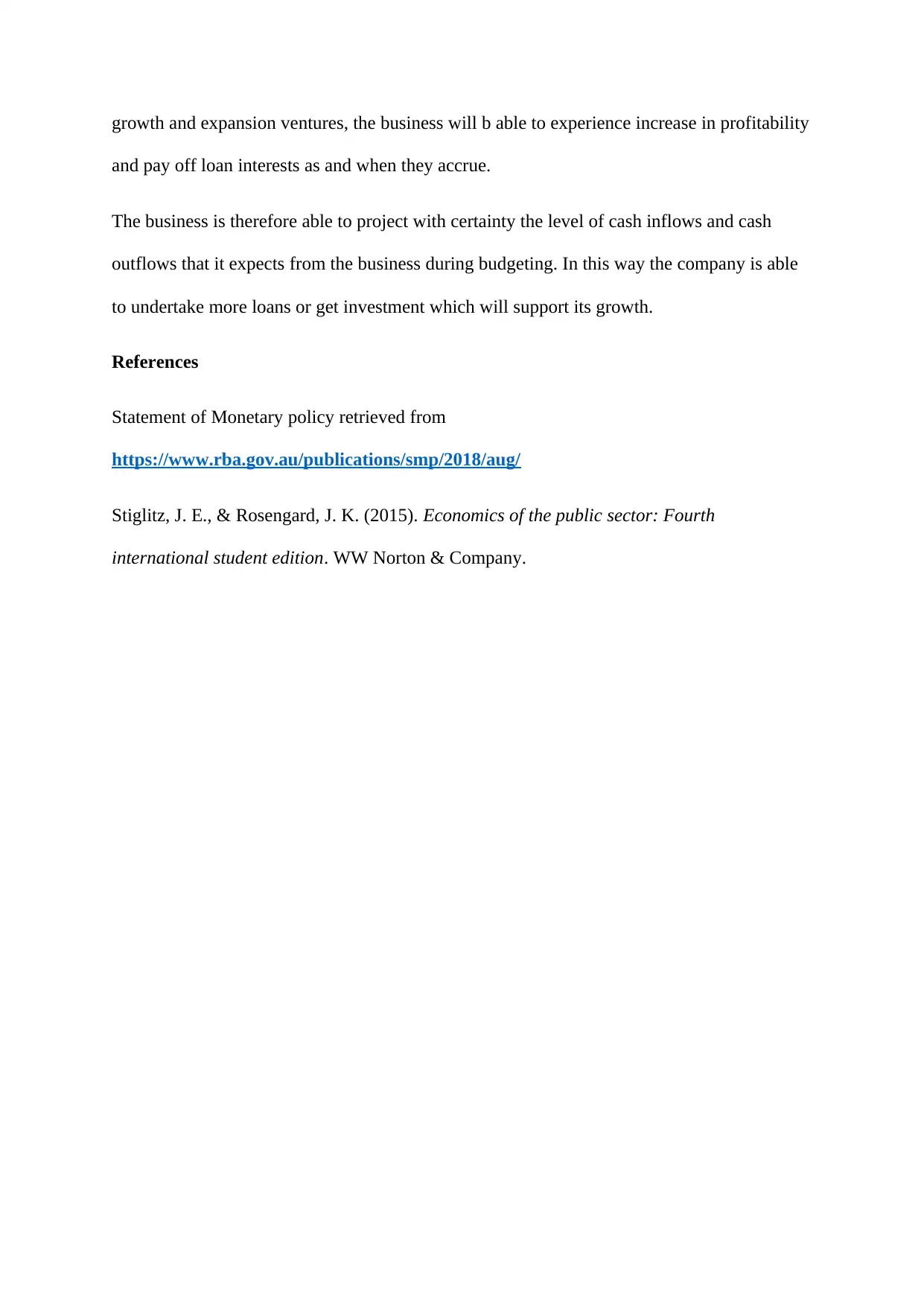RBA Policy Analysis: Interest Rate Forecasts and Business Impact
VerifiedAdded on 2023/06/03
|3
|718
|431
Report
AI Summary
This report assesses the Reserve Bank of Australia's (RBA) monetary policy statement and its implications for interest rates, specifically concerning a small business client importing retail goods with a variable rate loan. The analysis suggests that while the RBA aims to maintain a steady cash rate of 1.5% to support economic stability, lower unemployment, and higher inflation, interest rates are expected to remain stable in the short term. The report highlights that the business can anticipate consistent interest charges on current loans, enabling accurate budget projections for both interest payments and earnings. The stability allows the business to confidently plan for cash inflows via loans, supporting expansion and increased profitability. The report references the RBA's monetary policy statement and economic insights from Stiglitz & Rosengard, emphasizing the importance of stability in the real estate industry and the unlikelihood of immediate interest rate changes unless significant economic shocks occur. This enables the client to make informed decisions regarding investments and growth strategies, ensuring financial predictability and sustainability.
1 out of 3










![[object Object]](/_next/static/media/star-bottom.7253800d.svg)